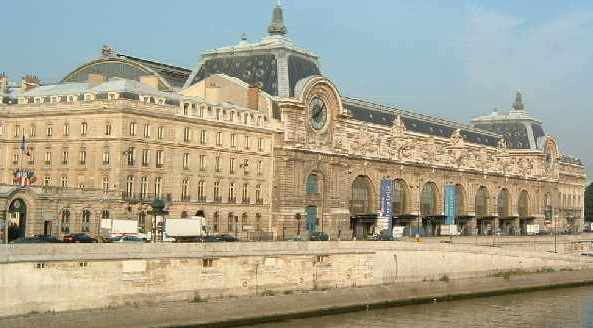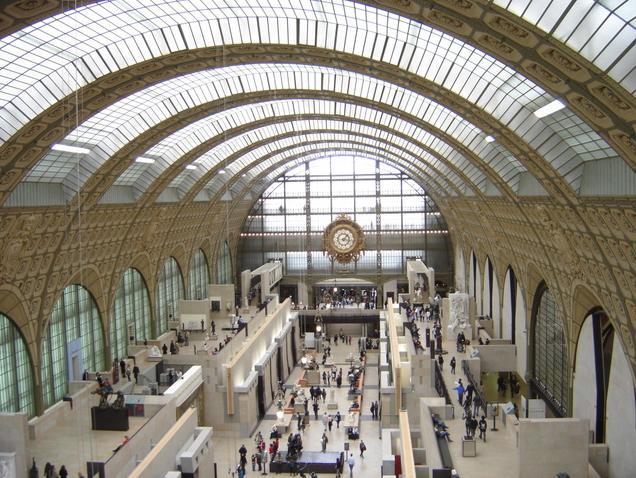Hailed by many as their favorite museum in Paris, the Musée d’Orsay is a must-see for any art-lover. The magnificent building that now houses the French national collection of art from 1848 to 1914 is in fact a restored railway station, originally built in 1900.
If only the rigid, inflexible Académiciens who turned the Impressionists away from the Louvre salon could see the Musée d'Orsay today. Now art masterpieces of in their own right, these rejected paintings are worth the excursion to this house of modern art, basically from the 19th and 20th century.
Musée d'Orsay is one of the most popular ones in Paris, and the crowds that pilgrimage are proportionate. The museum's collection includes a variety of art, from painting to photography, from sculptures to decorative arts, in a period that spans from 1848 until the Second World War.

Musée d'Orsay was originally Gare d' Orsay. The building was constructed for the 1900 World Fair, though it's industrial purpose was concealed well by its architect Victor Laloux with materials such as glass and stucco.. Before it was closed in 1939 the station was the main terminal for southwest-bound trains, but soon the newer, modern trains became too long for its platforms.
Some time and lots of cultural regeneration later, the Musée d’Orsay opened as one of Mitterrand’s Grands Projets, works were gathered from many museums, including Louvre, Jeu de Paume Musée de Luxembourg among other important museums as well as provincial museums, and private collections.
The list of artists who have works in the Orsay reads like a Who's Who of the Impressionist world. Think Degas, Renoir, Cezanne, Manet, Matisse, Van Gough and Monet and more.
Manet's scandalous works that sparked the trend for impressionism are located on the ground floor which is dedicated to Pre-Impressionist paintings and sculpture.
The floor above is a role call of the Impressionist and Post-Impressionist movers and shakers: Monet, Manet, Seurat, Van Gogh, and Degas (his famed dancers and prostitutes are a highlight).
Besides the permanent collection there are seven temporary exhibition spaces at intervals throughout the building.
Those intimidated by the Louvre’s maze-like layout and endless corridors find this museum a refreshing change, with the towering ceilings and aches of light flooding in. Another bonus, the balconies offer supreme views of the Seine and a jungle of sculptures below.

The queues for the Musée d'Orsay are some of the longest in Paris. Book ahead on the website or buy a Museum Pass; then go directly to entrance C. Otherwise, go early.
If you're feeling flash the Guide to the Musée d’Orsay by Caroline Mathieu, the museum’s director, is worth the splurge, if not the handheld audioguides are cheaper. They are available in English and other languages, provide stories and analyses of 60 of the museum’s impressive masterpieces.
Tours, including English language ones, leave every hour from the group reception area. The Restaurant du Musée d’Orsay on the middle floor is worth a look on its own merit. The magnificent chandeliers are only outdone by the great view of the Seine in this Belle Époque style restaurant.
Remember that the Orsay is closed on Monday, unlike the Pompidou and the Louvre, which are closed on Tuesday.
Finally, if you can go on a Thursday when late admittance is accepted until 6pm and the ticket price is reduced.